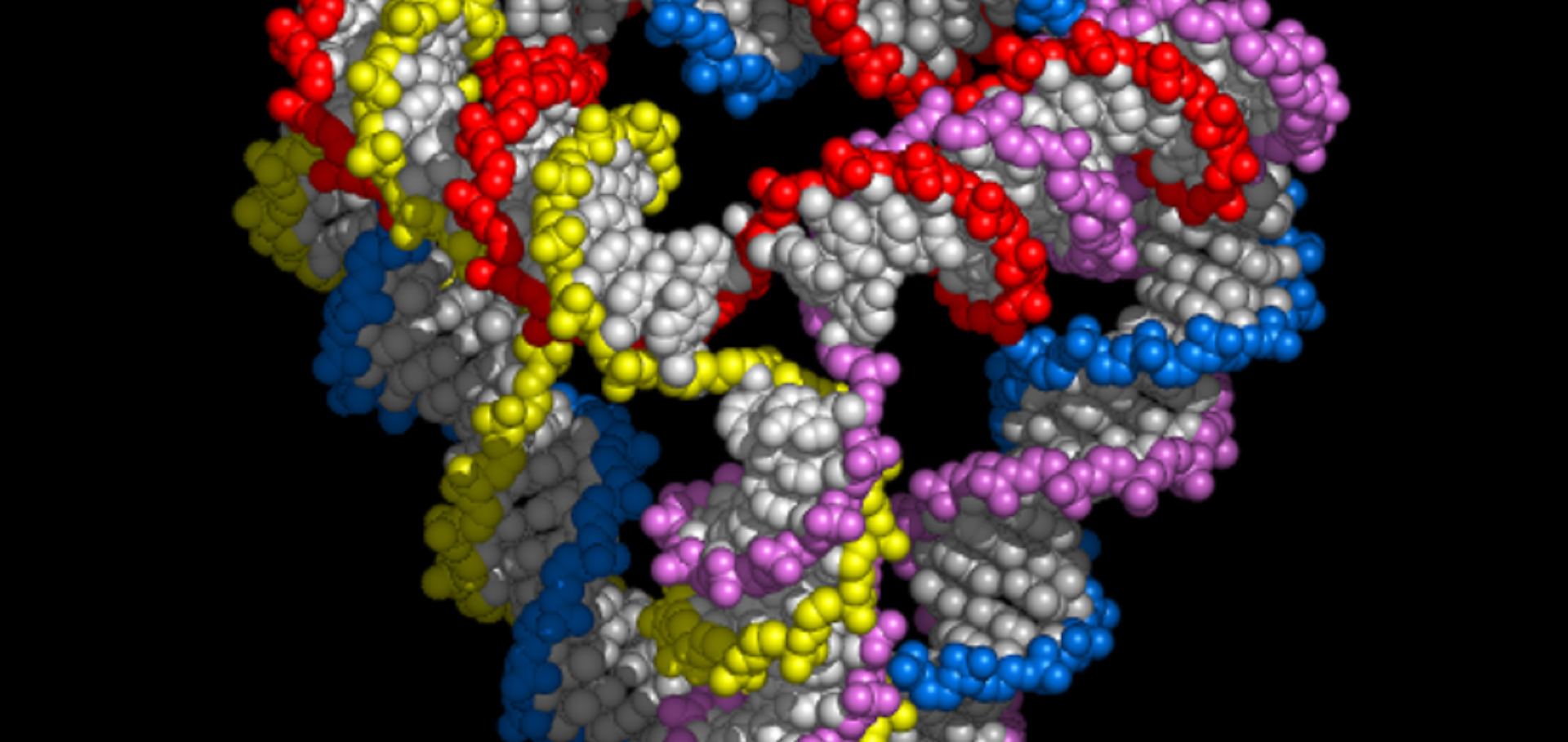Reconfigurable, braced, three-dimensional DNA nanostructures.
Nat Nanotechnol 3:2 (2008) 93-96
Abstract:
DNA nanotechnology makes use of the exquisite self-recognition of DNA in order to build on a molecular scale. Although static structures may find applications in structural biology and computer science, many applications in nanomedicine and nanorobotics require the additional capacity for controlled three-dimensional movement. DNA architectures can span three dimensions and DNA devices are capable of movement, but active control of well-defined three-dimensional structures has not been achieved. We demonstrate the operation of reconfigurable DNA tetrahedra whose shapes change precisely and reversibly in response to specific molecular signals. Shape changes are confirmed by gel electrophoresis and by bulk and single-molecule Förster resonance energy transfer measurements. DNA tetrahedra are natural building blocks for three-dimensional construction; they may be synthesized rapidly with high yield of a single stereoisomer, and their triangulated architecture conveys structural stability. The introduction of shape-changing structural modules opens new avenues for the manipulation of matter on the nanometre scale.Engineering entropy-driven reactions and networks catalyzed by DNA.
Science 318:5853 (2007) 1121-1125
Abstract:
Artificial biochemical circuits are likely to play as large a role in biological engineering as electrical circuits have played in the engineering of electromechanical devices. Toward that end, nucleic acids provide a designable substrate for the regulation of biochemical reactions. However, it has been difficult to incorporate signal amplification components. We introduce a design strategy that allows a specified input oligonucleotide to catalyze the release of a specified output oligonucleotide, which in turn can serve as a catalyst for other reactions. This reaction, which is driven forward by the configurational entropy of the released molecule, provides an amplifying circuit element that is simple, fast, modular, composable, and robust. We have constructed and characterized several circuits that amplify nucleic acid signals, including a feedforward cascade with quadratic kinetics and a positive feedback circuit with exponential growth kinetics.A self-assembled DNA bipyramid.
J Am Chem Soc 129:22 (2007) 6992-6993
DNA nanomachines.
Nat Nanotechnol 2:5 (2007) 275-284
Abstract:
We are learning to build synthetic molecular machinery from DNA. This research is inspired by biological systems in which individual molecules act, singly and in concert, as specialized machines: our ambition is to create new technologies to perform tasks that are currently beyond our reach. DNA nanomachines are made by self-assembly, using techniques that rely on the sequence-specific interactions that bind complementary oligonucleotides together in a double helix. They can be activated by interactions with specific signalling molecules or by changes in their environment. Devices that change state in response to an external trigger might be used for molecular sensing, intelligent drug delivery or programmable chemical synthesis. Biological molecular motors that carry cargoes within cells have inspired the construction of rudimentary DNA walkers that run along self-assembled tracks. It has even proved possible to create DNA motors that move autonomously, obtaining energy by catalysing the reaction of DNA or RNA fuels.PHYS 393-Engineering entropy-driven reactions and networks catalyzed by DNA
ABSTRACTS OF PAPERS OF THE AMERICAN CHEMICAL SOCIETY 234 (2007)


